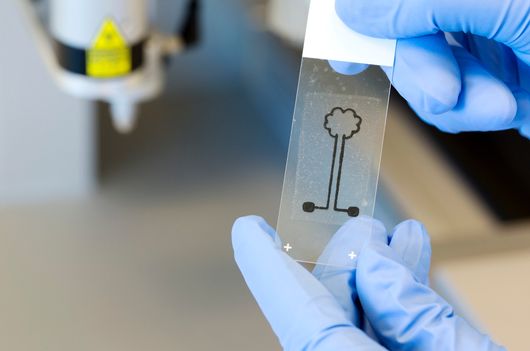
The 3D printing revolution brings with it a harmful side effect: the special inks that it uses are derived (for the most part) from environmentally-unfriendly processes involving fossil fuels and toxic byproducts. But now scientists at Chalmers University of Technology have succeeded in using cellulose – the most abundant organic compound on the planet – in a 3D printer. They were also able to create electrically-conductive materials by adding carbon nanotubes.
The 3D printing revolution brings with it a harmful side effect: the special inks that it uses are derived (for the most part) from environmentally-unfriendly processes involving fossil fuels and toxic byproducts. But now scientists at Chalmers University of Technology have succeeded in using cellulose – the most abundant organic compound on the planet – in a 3D printer. They were also able to create electrically-conductive materials by adding carbon nanotubes.
To be specific, the researchers used nanocellulose obtained from wood pulp. This is the stuff that forms the scaffolding that makes trees able to stand tall. It's available in massive quantities, plus it's biodegradable, incredibly strong, renewable, and reusing it keeps the carbon dioxide it contains from entering the atmosphere.
Normally, 3D printing uses a heated liquid form of plastic or metal that hardens and solidifies as it cools and dries. But cellulose doesn't melt when you heat it, so it's not previously been considered a suitable material.
The researchers mixed the cellulose in a hydrogel of 95-99 percent water, which allowed it to go into a 3D bioprinter, and in some instances with carbon nanotubes so that it could conduct electricity. The very high water content of the resultant printer gel meant that the drying process had to be carefully controlled so as not to lose the object's 3D structure. The scientists found that they could also allow the structure to collapse into a thin film (like a circuit).
"Potential applications range from sensors integrated with packaging, to textiles that convert body heat to electricity, and wound dressings that can communicate with healthcare workers," says lead researcher Paul Gatenholm. "Our research group now moves on with the next challenge: to use all wood biopolymers besides cellulose."
The researchers presented their findings at the New Materials From Trees conference in Stockholm earlier this week.

 Previous page
Previous page Back to top
Back to top







